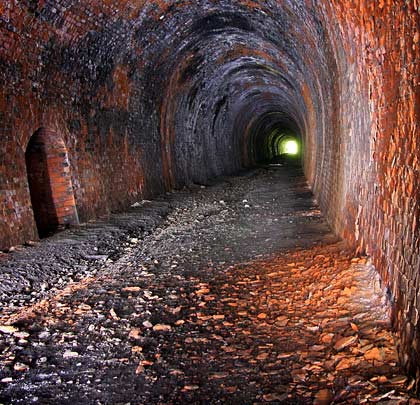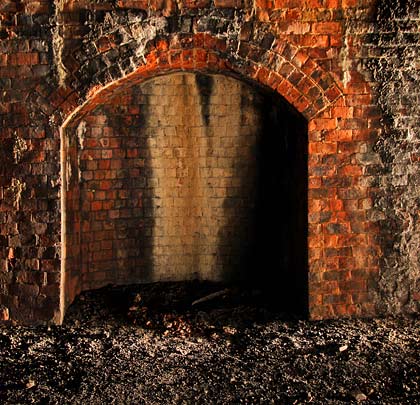Hillhead (Edlingham) Tunnel
Hillhead (Edlingham) Tunnel






















In 1881, plans to extend the Rothbury branch northwards to Cornhill – known as the Central Northumberland Railway – faced vigorous opposition from the traders of Alnwick, fearful that valuable agricultural traffic from Wooler would disappear to rival markets in Rothbury. And so, with some reluctance, the North Eastern Railway was prompted to promote its own 36-mile line from the existing terminus at Alnwick to Cornhill via Wooler. The company’s proposal was by far the cheaper and an enabling Act passed through Parliament on 19th May 1882. Having cost £272,266 to build, communities along the route joined the age of the train on 5th September 1887.
One-and-a-quarter miles north of Edlingham Station, the railway was forced to penetrate a ridge at Hill Head. This involved a tunnel of 351 yards (structure number AKC/55) – curving slightly westwards at its southern extreme before adopting a straight course. Built for the route’s single line, it was lined entirely in red brick which came from a local brickworks, connected to the construction site by a two-mile tramway. Numerous ample refuges were provided as well as two ventilation shafts, 4 feet in diameter. These have concrete rings at their bases. The portals are similar in design – both fashioned from stone, with buttresses and triangular wing walls either side of the entrances.
Long term, the route was not a roaring commercial success. Passenger services were withdrawn on 22nd September 1930, just 43 years after they started; the section of line through the tunnel closed completely on 2nd March 1953.
Today the tunnel suffers from water ingress. Despite weep holes being cut into the lining, large patches of brickwork have spalled. At times, the flow has clearly been sufficient to scour a channel in the floor. Despite this, the structure generally appears to be in reasonable condition. Its approach cuttings are however muddy and choked with vegetation.
 December 2011
December 2011





